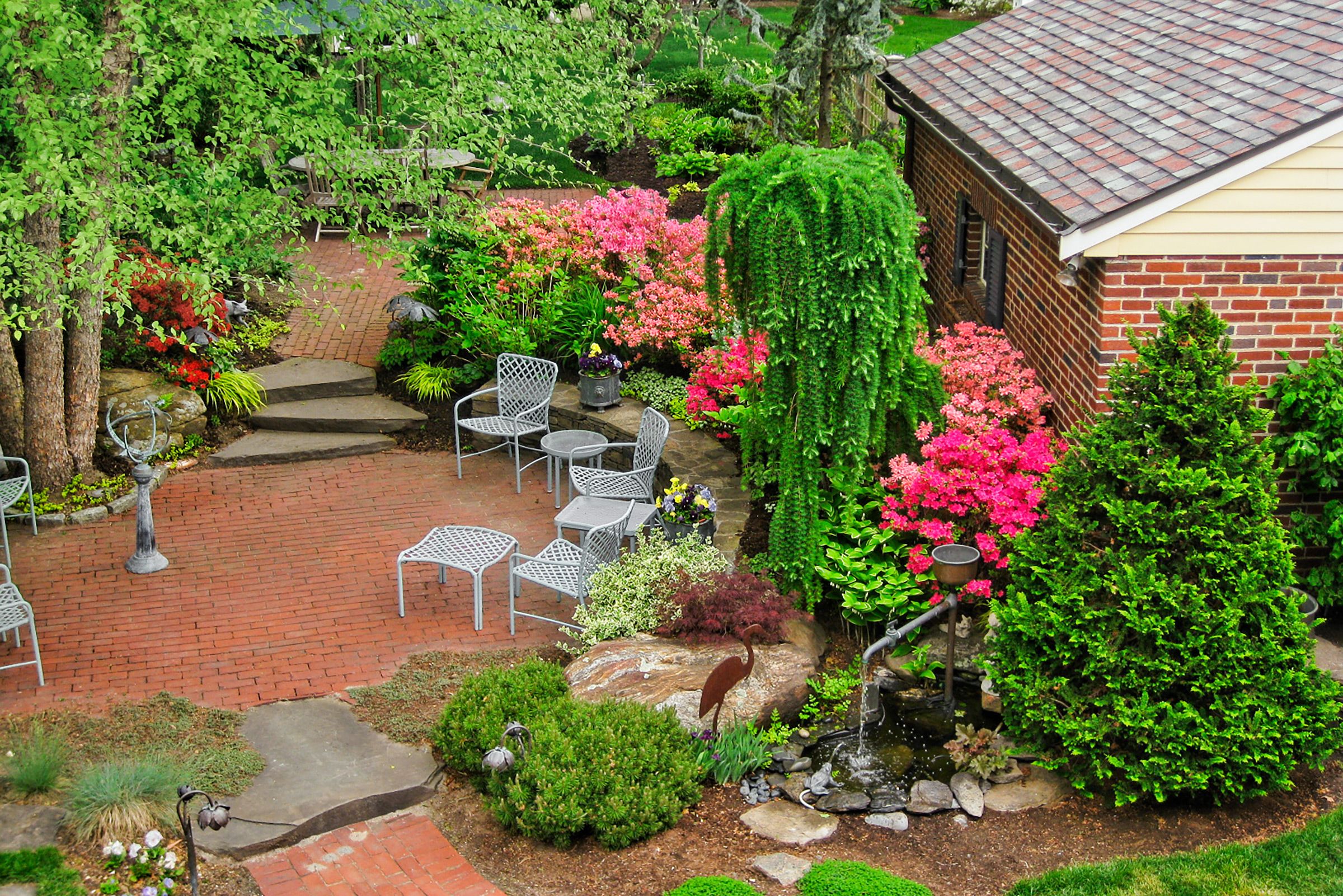“Maintaining the garden takes about 60 hours a week—but I love it!” —Joyce Hannaford, Natick, Massachusetts
Try reaching Joyce Hannaford in peak growing season and you may get nowhere. “I don’t take my phone with me anymore,” she says of her forays outside. “The last time, I left it in Zone 12—luckily before the sprinklers kicked on.”
Wondering where that growing zone is on the map? Turns out Joyce has subdivided her own third-of-an-acre yard into a dozen irrigation zones fed by an automated system hooked up to a 150-foot-deep well. She still hauls 100 feet of hose around the garden, though. “I like to really soak certain plants. I do it late in the day. I find it soothing. It forces me to take a harder look at a spot.”
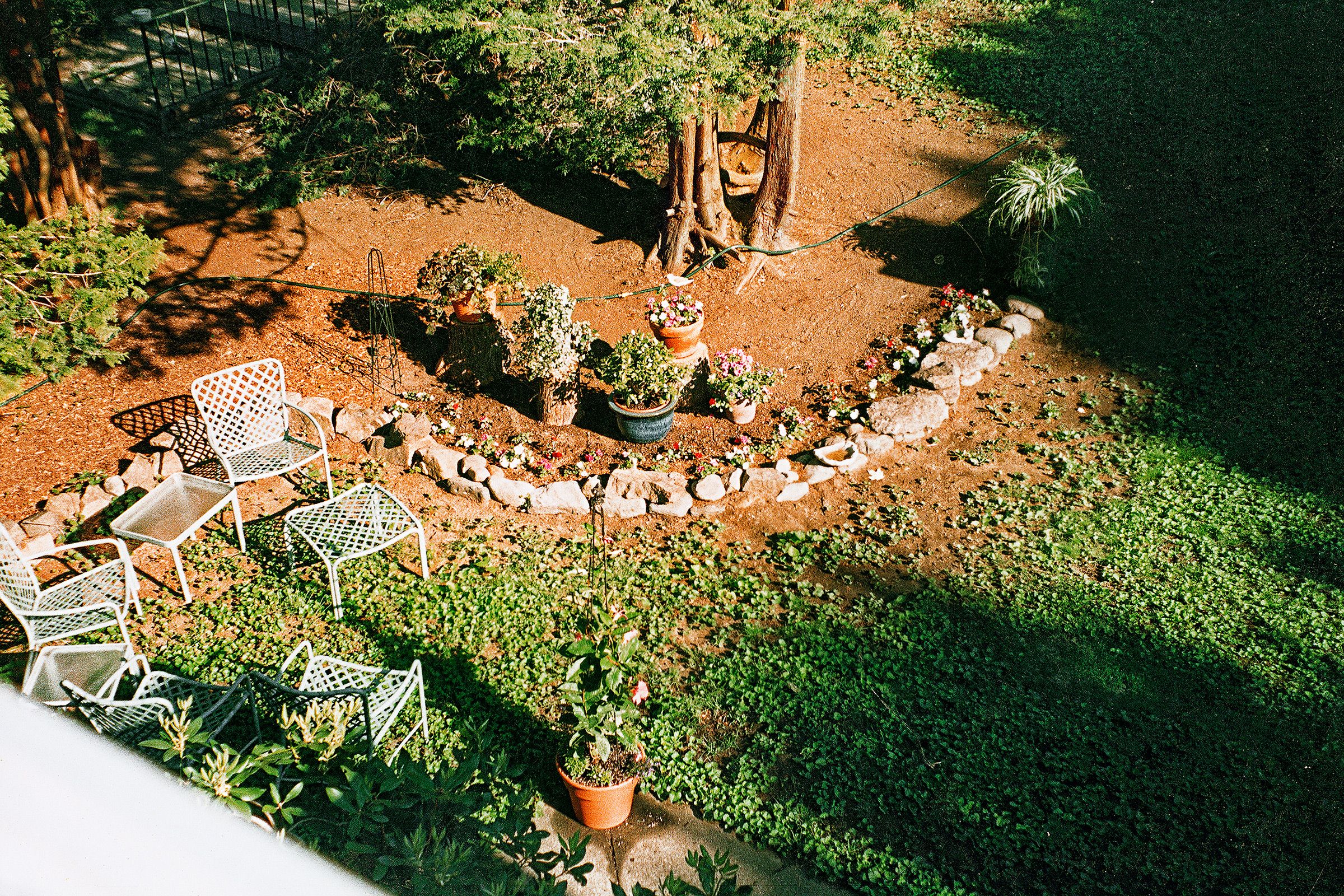
Friends may wonder how Joyce could look any harder than she already has. Since her first attempt at bringing the then-desolate yard to life 12 years ago, when she planted 70 daylilies passed along by a friend, Joyce has managed to pack trees, perennials, and annuals into every available inch. “This is my passion,” she says simply, adding that before reaching retirement age she thought of work as a way to support her growing habit. And, no, she can’t tell you how much she’s spent over the years. “I don’t want to know,” she adds.
Passion, Not Pastime
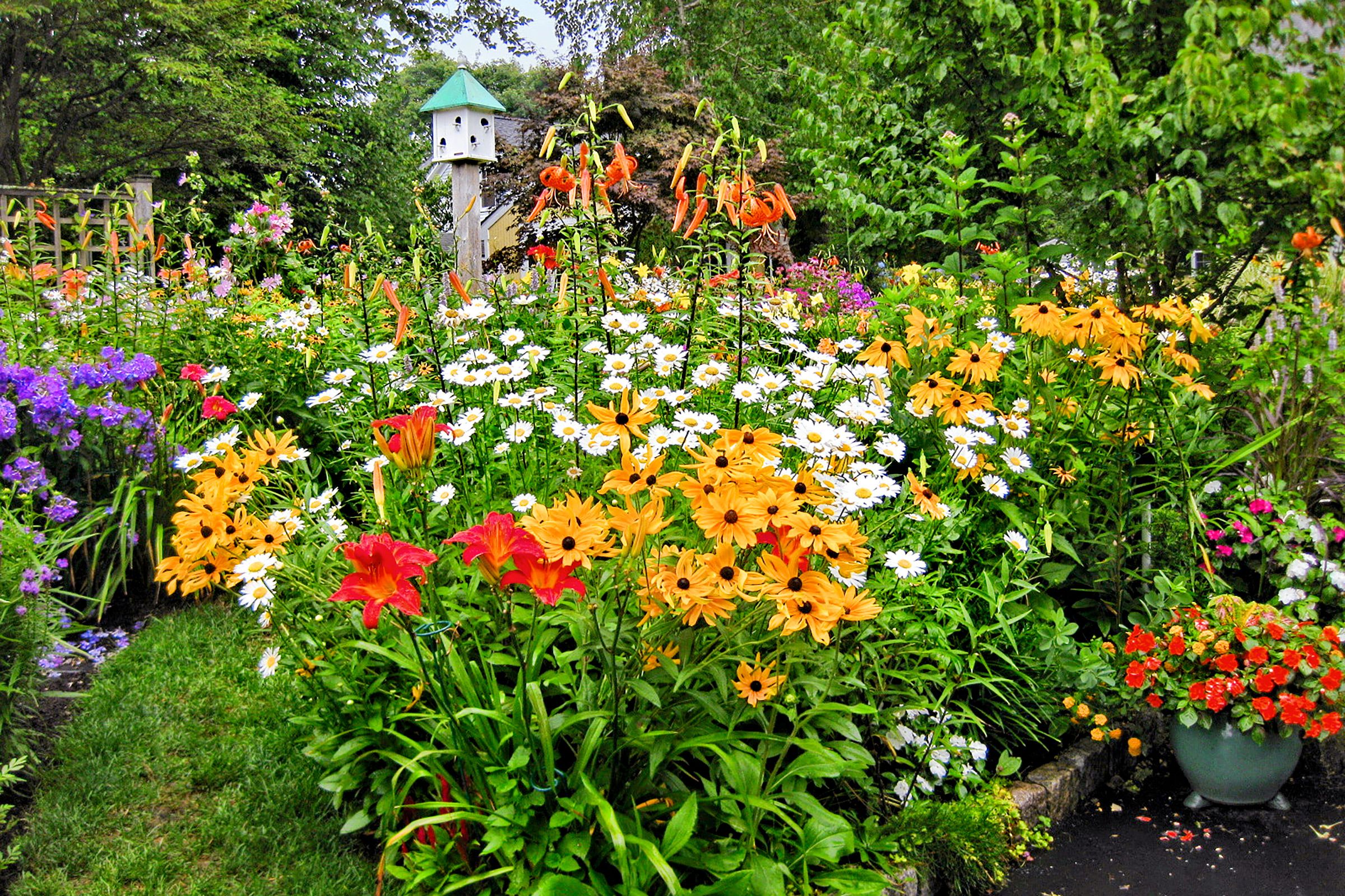
Other people collect art, play poker, or spend all day on Facebook. For Joyce, who grew up gardening in Franconia, New Hampshire, and still remembers her gateway plant—and the 10-pound zucchini it yielded for first-grade show-and-tell—few things are as satisfying as watching a patch of earth burst forth. These days she’s more into flower than food production and puts in lots of reliable bloomers; last summer she counted 875 daylilies all flowering at once.
Torn Apart and Put Back Together
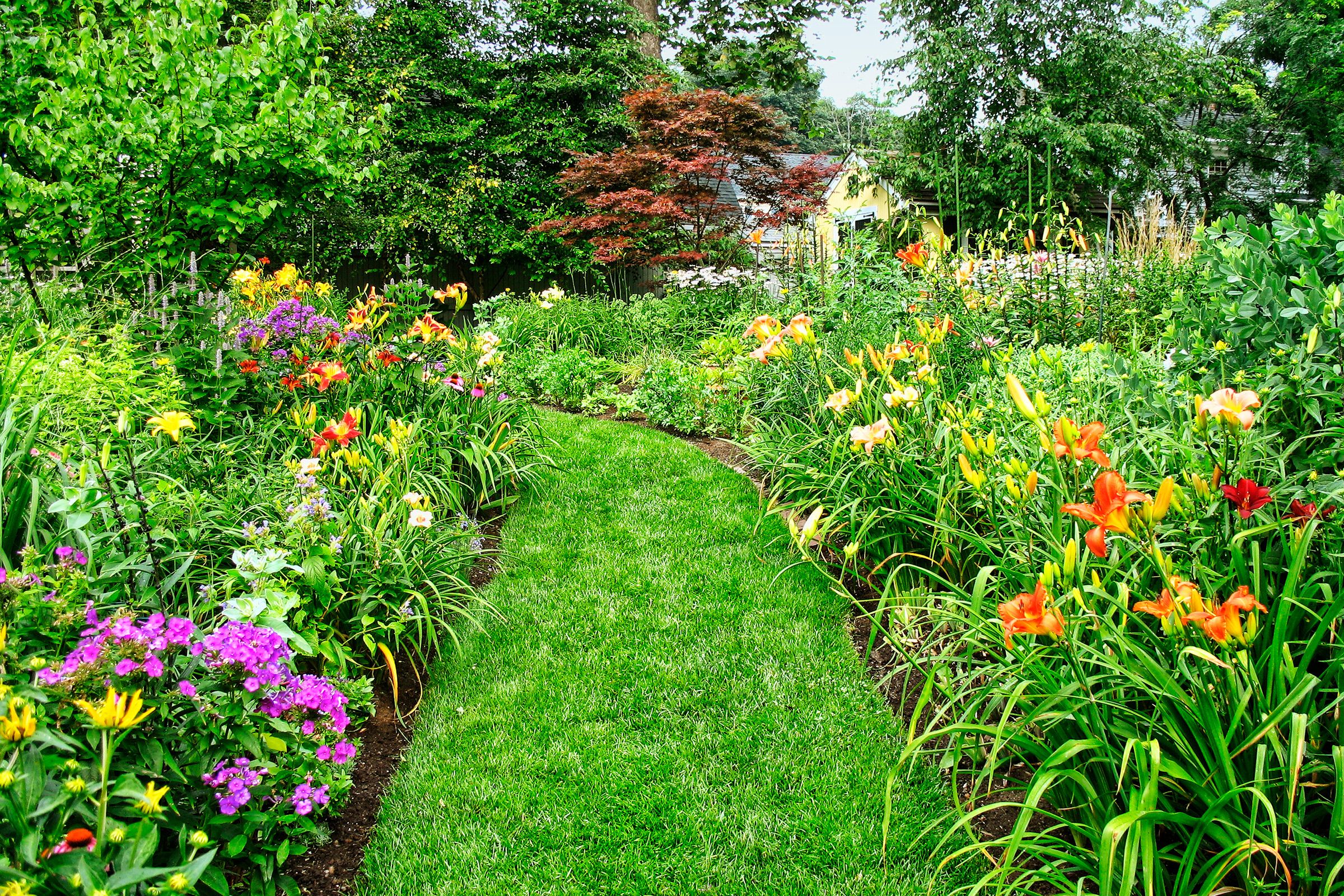
When Joyce and her husband, Charlie, bought their house, the yard was mainly spindly cedars and overgrown brush. After taking care of much-needed repairs inside, “we started tearing apart the yard,” Joyce says. “It looked like a logging operation back there.” Surviving trees, bushes, and daylilies were pruned or moved to new spots, clearing the way for two brick patios linked by stone steps—followed by an avalanche of color.
In a mad dash to find the best flower varieties and color combinations, “I drove all over New England,” Joyce says. Ultimately she settled down with a nearby nursery, where she loads up her tarp-lined SUV on a regular basis.
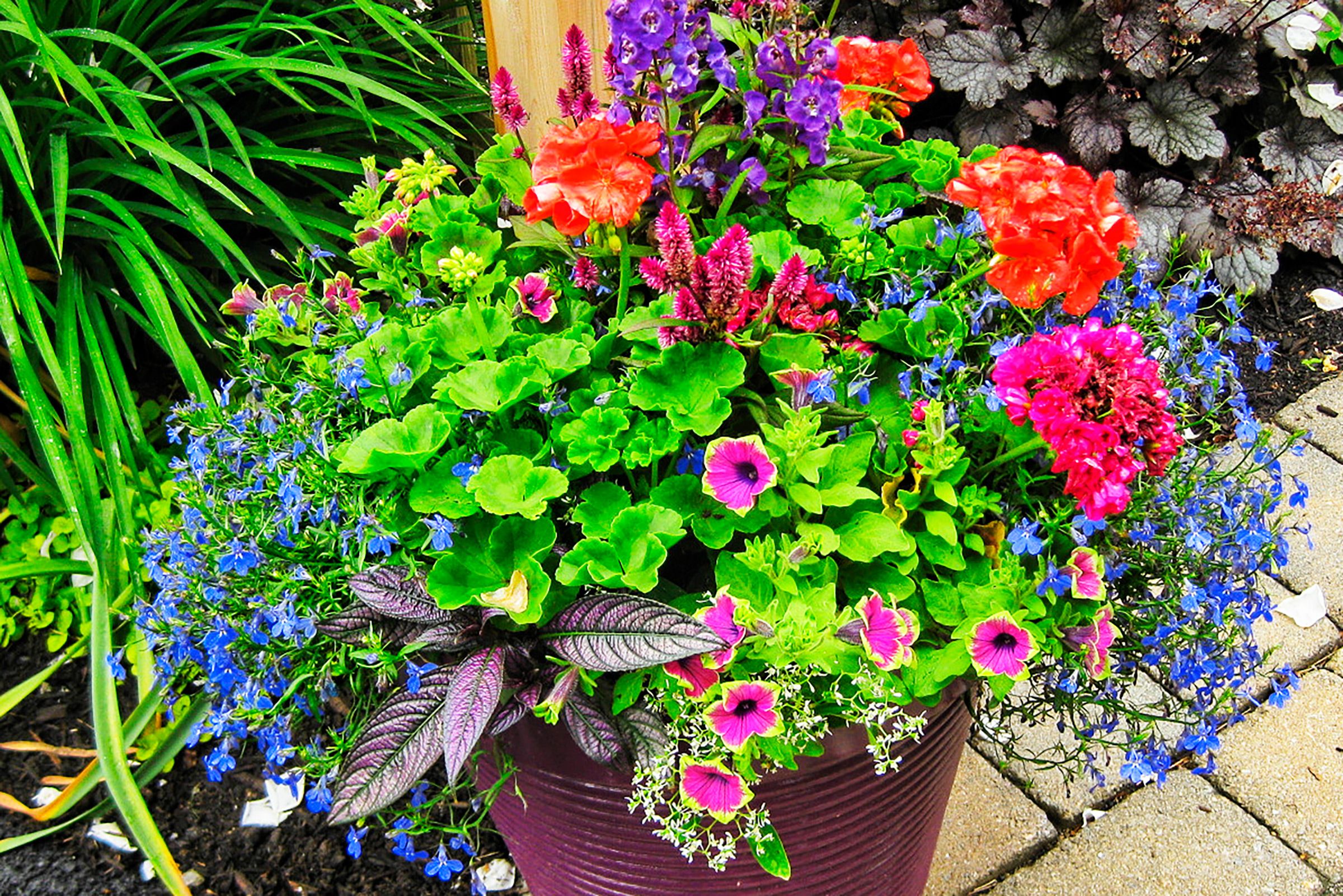
Caught one morning in early May, she ticked off her to-do list. “I have to buy more stones for the water feature, then I’m off to the nursery for impatiens. Then I’ll stop by a trade school where they teach gardening and sell plants to raise funds. They have this German ivy I can’t find at the nursery and colored geraniums in odd lots.” The impatiens were destined for five whiskey half-barrels and the ivy and geraniums for a row of window boxes outfitted, naturally, with automated misters.
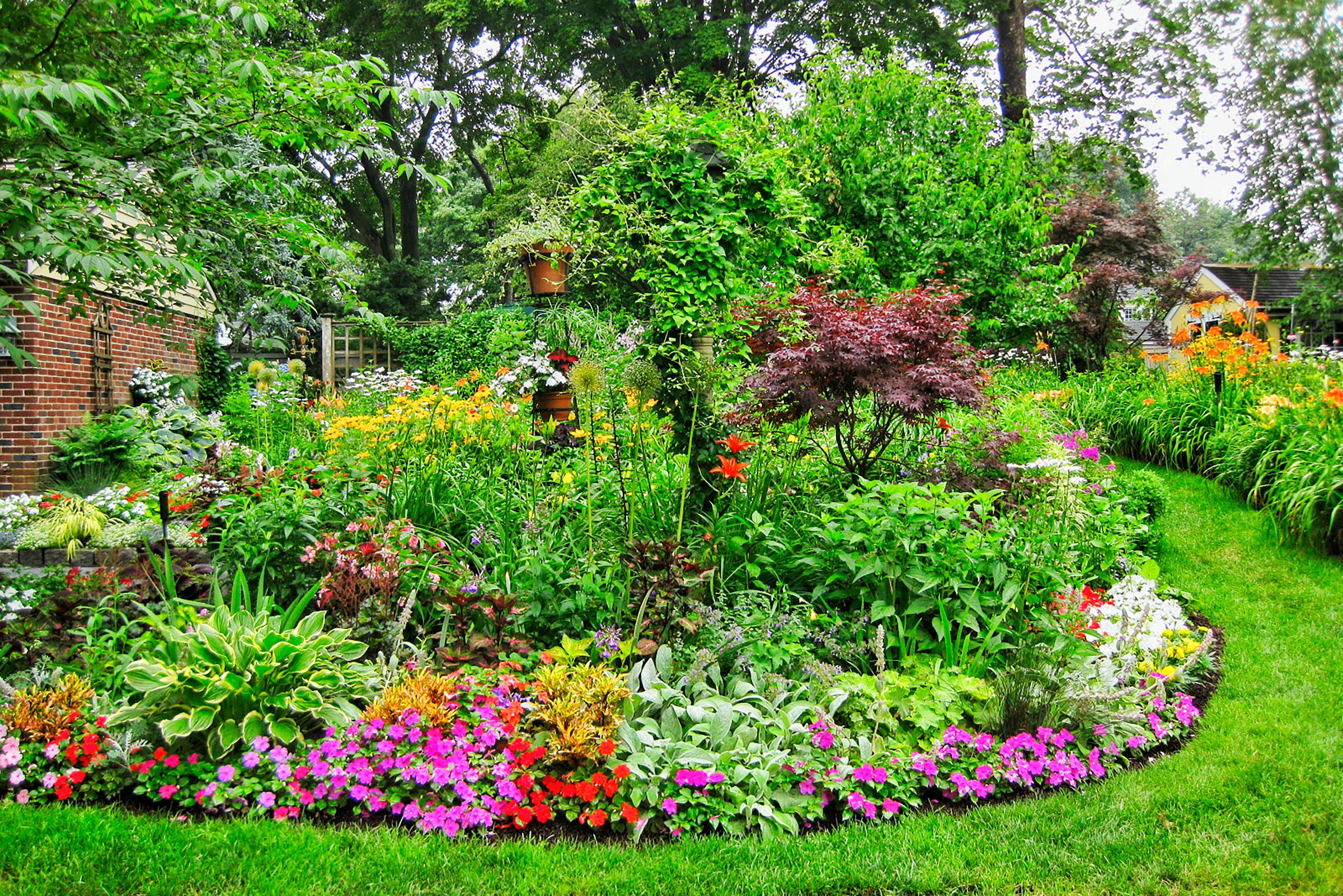
When is more and more too much? “Gardeners are all cut from the same cloth,” says Joyce, who belongs to the local garden club and loves nothing more than redistributing plants crowded out of her yard. “We don’t just garden to look out at it. We do it to share.” She adds, “There’s always more to learn.”
The path from the driveway to the cocktail patio swoops by hot pink, crimson, and white impatiens and foliage plants, including hosta ‘Minuteman’ and lambs’ ears. Adding height to this grouping are rudbeckia, oriental lilies, a weeping vine spilling out of a raised terra-cotta planter, and a Japanese maple, whose rusty-red leaves echo wax begonias hovering behind the hosta.
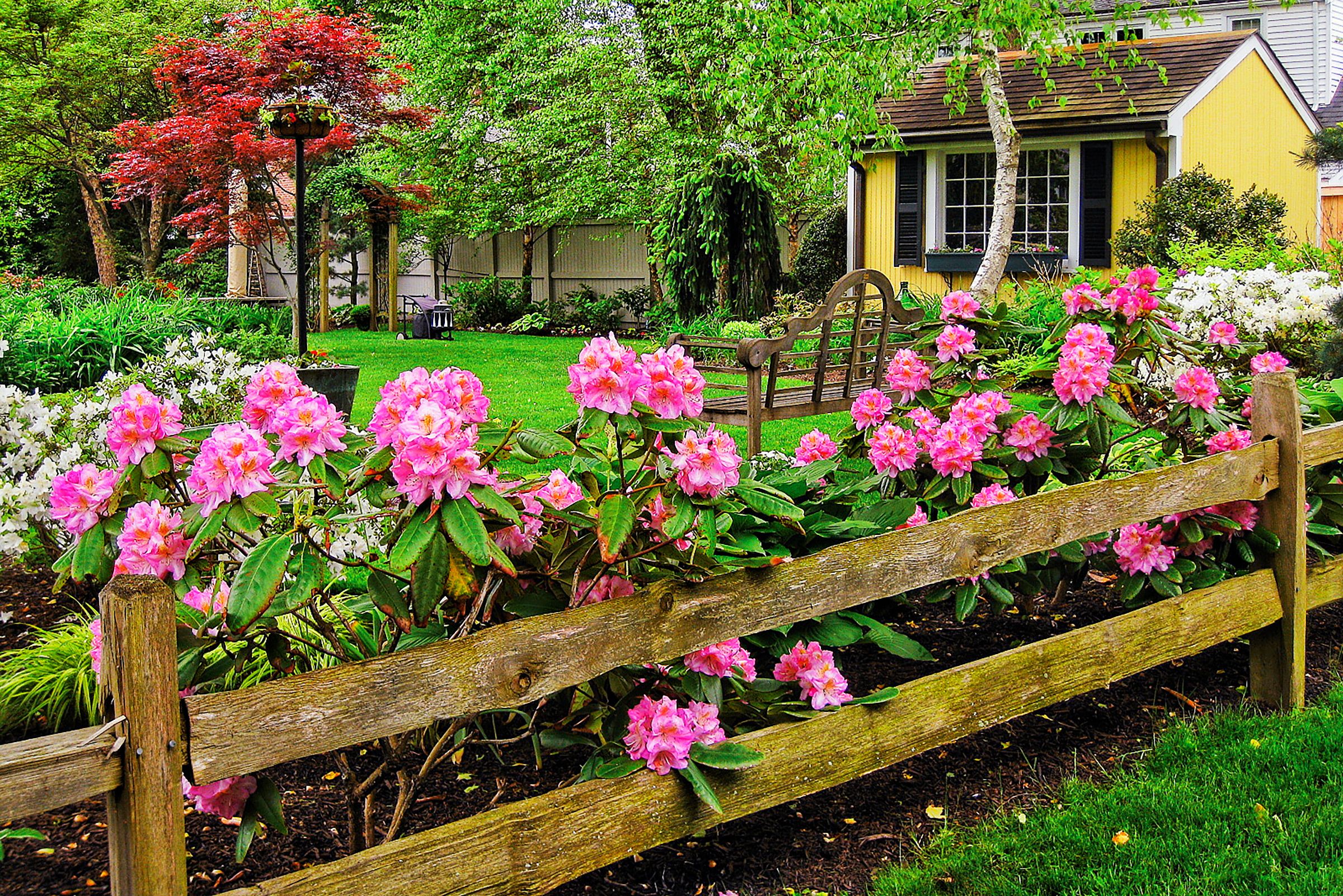
A fastidious note taker and amateur photographer, Joyce takes her iPad out to the garden to record and adjust her plantings. Like other gardeners, she will also happily pause her hori-hori gardening knife long enough to exchange tips with strangers over the fence; a bicyclist who happened by turned out to be a landscape architect whom she now counts as a friend—and resource.
In Memoriam
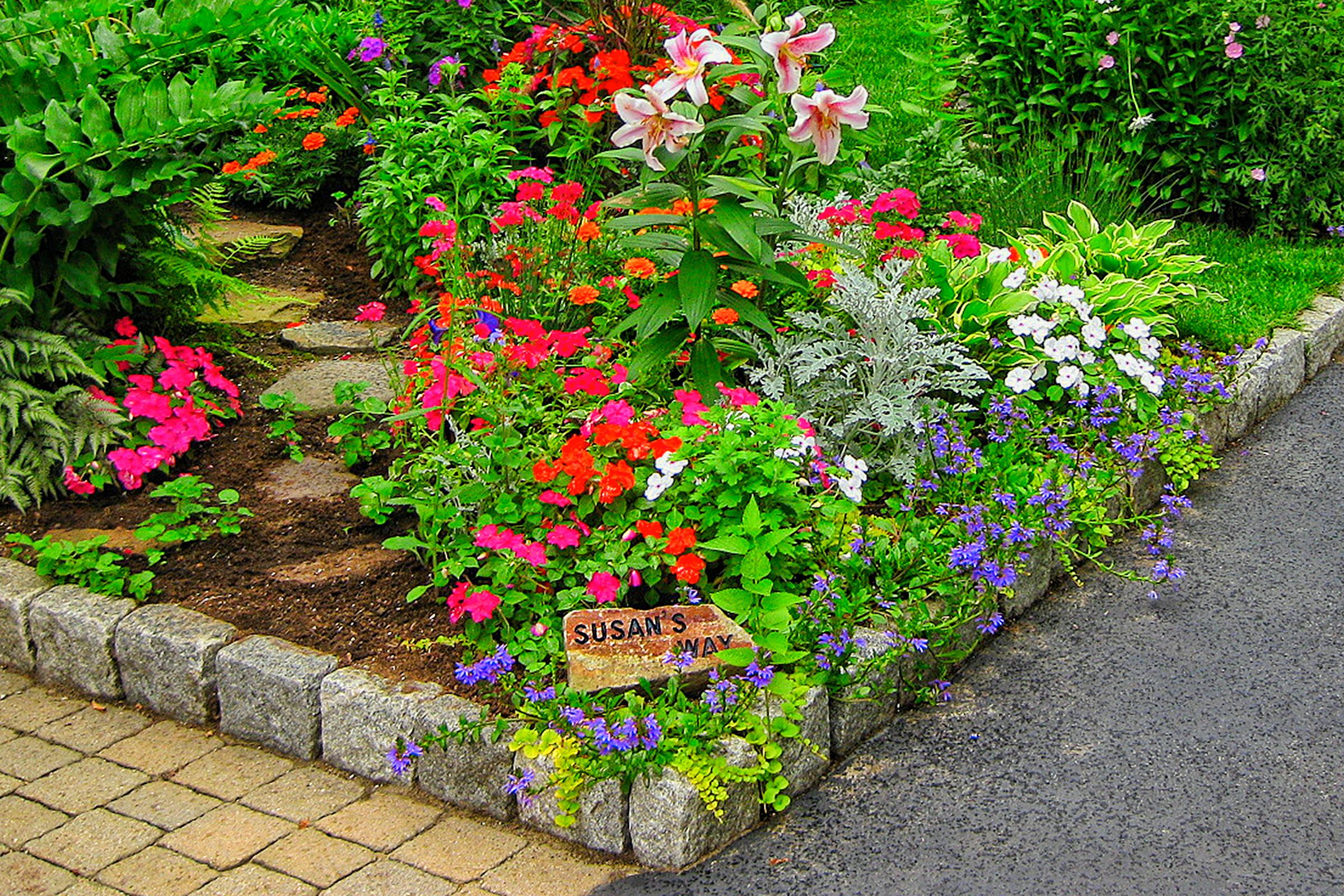
To help celebrate her garden’s most floriferous days of the year, in mid-July, Joyce invites in about 80 guests. They enter near a series of flat, brownish-red stepping stones crowned by one bearing the inscription SUSAN’S WAY. Susan was a close friend of Joyce’s, and the two women had collected the stones in Franconia during one of their last trips together. After Susan died of ovarian cancer, in 2005, Joyce set aside this area as a memorial.
Susan’s Way

“She loved coming in that way because she said you never know what you’ll see—it’s always a surprise,” Joyce recalls of her friend. “The garden is always evolving.” Just like any well-lived, well-tended life.
A Few of Her Favorites
‘Belonica’
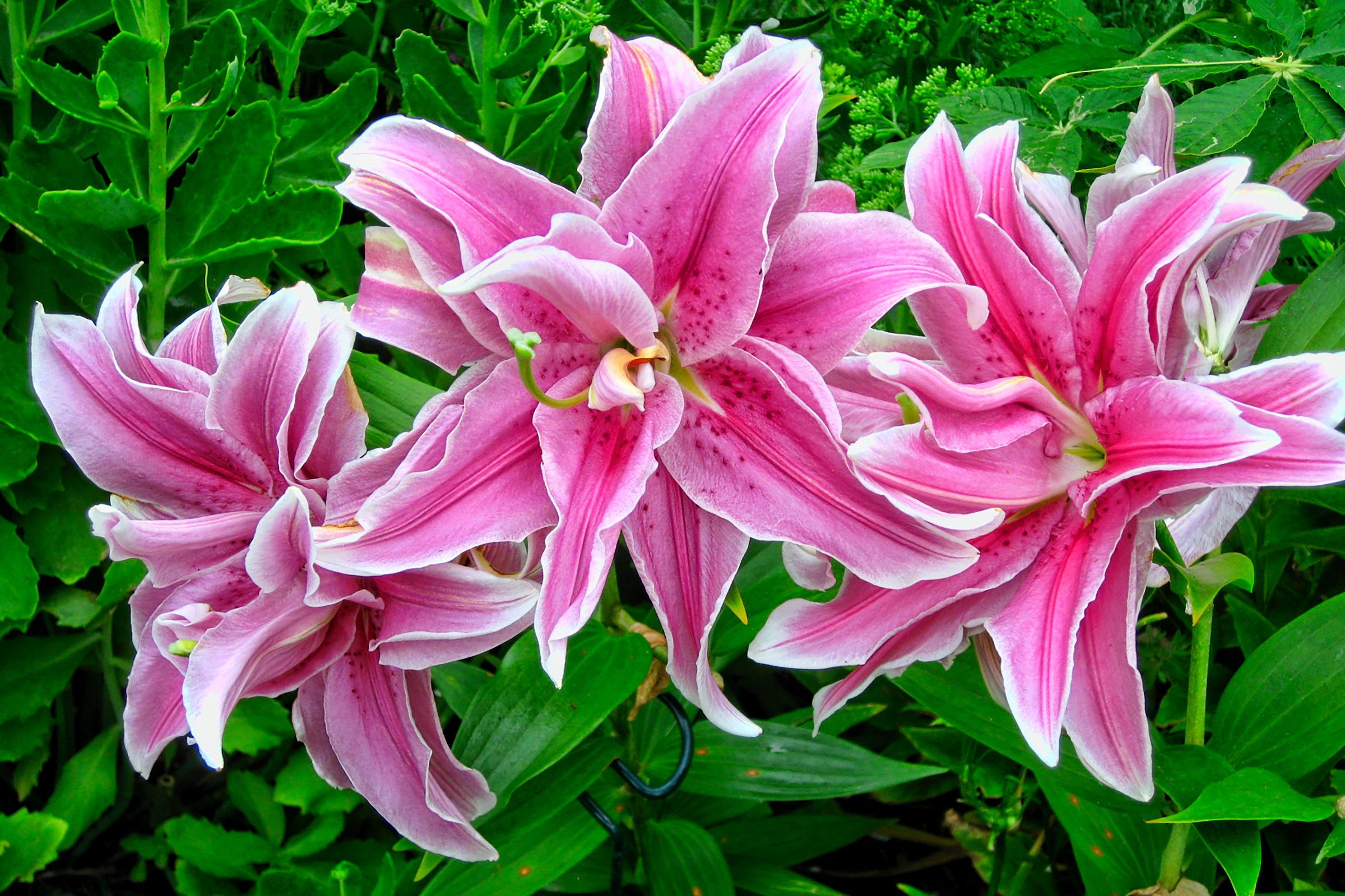
Double pink flowers with white margins open on 4-foot stems in July and August.
Fragrant oriental lilies require full sun and well-draining soil. Their sensational blooms, unlike those of daylilies, last for weeks.
‘Muscadet’
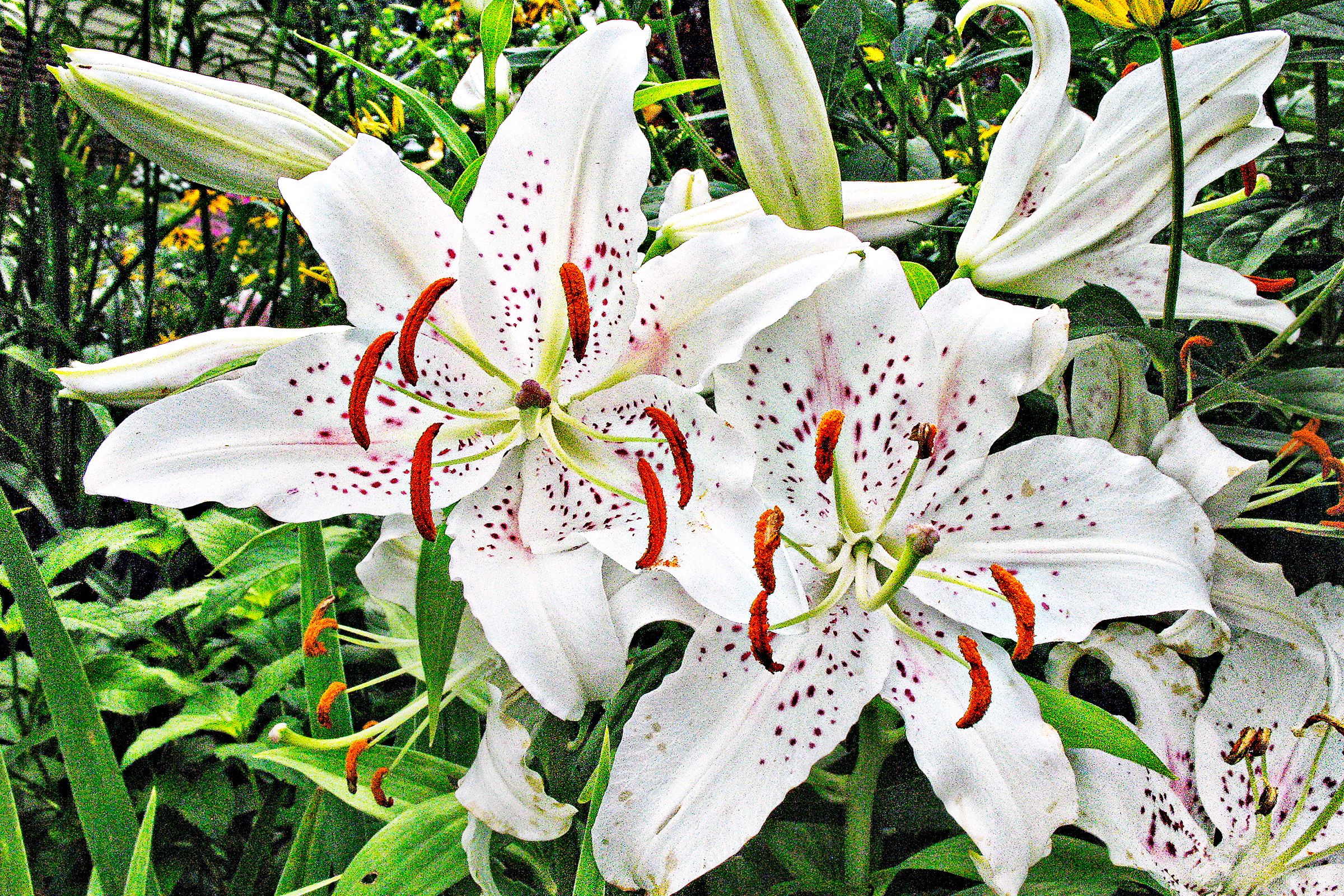
Wide white blooms with pink dots open on 3-foot stems in July and August.
‘Arabesque’
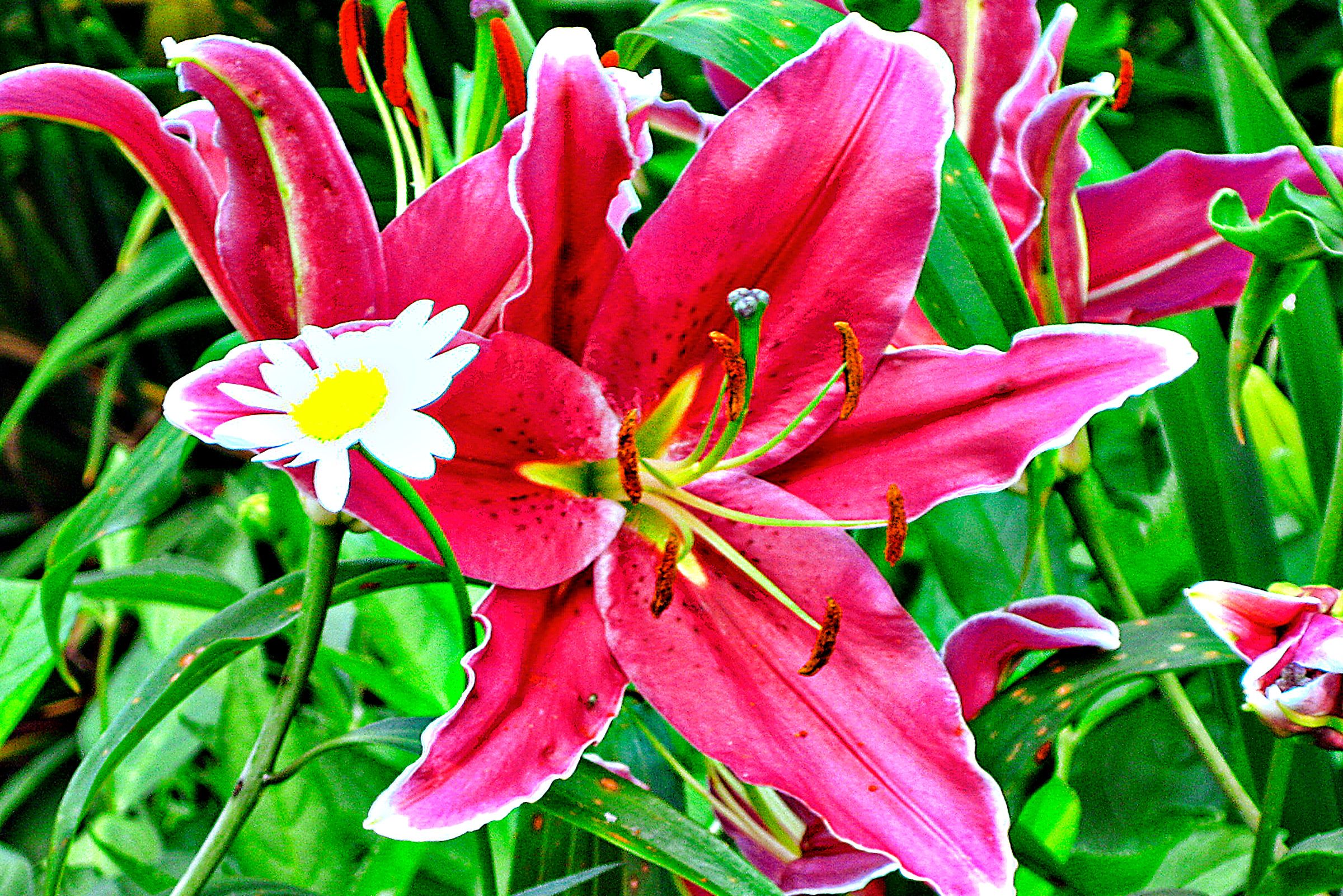
Wine-red flowers with white edges bloom on stems that climb to 6 feet in August and September.
